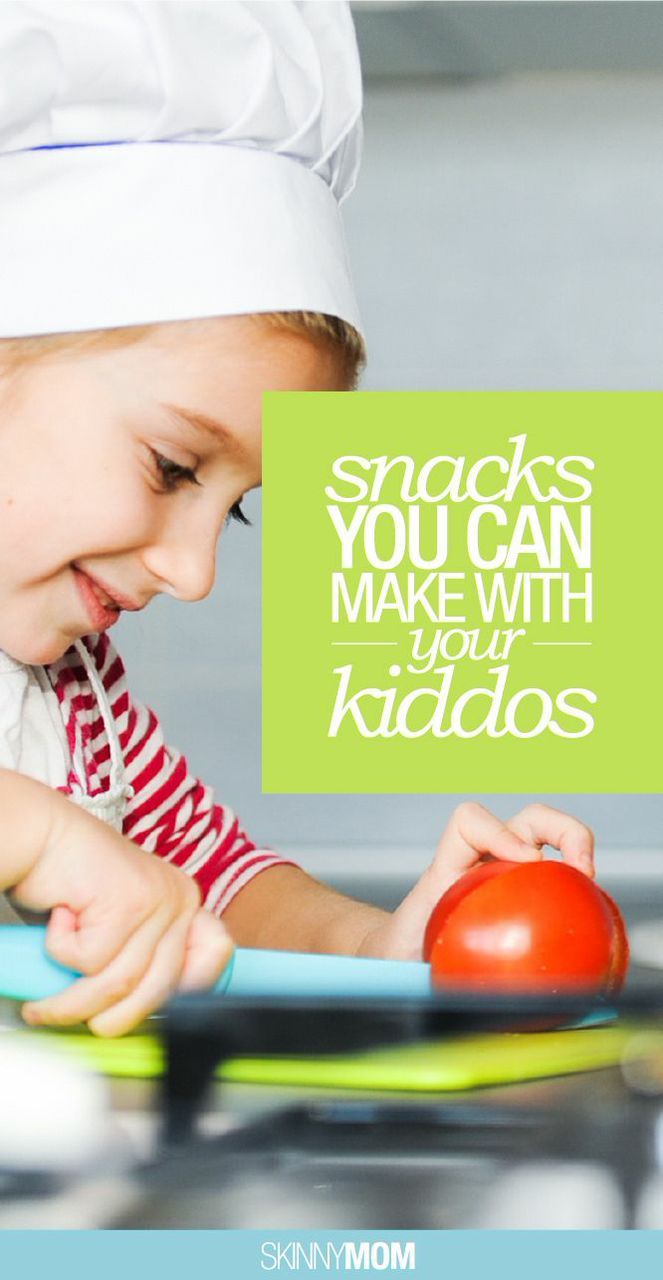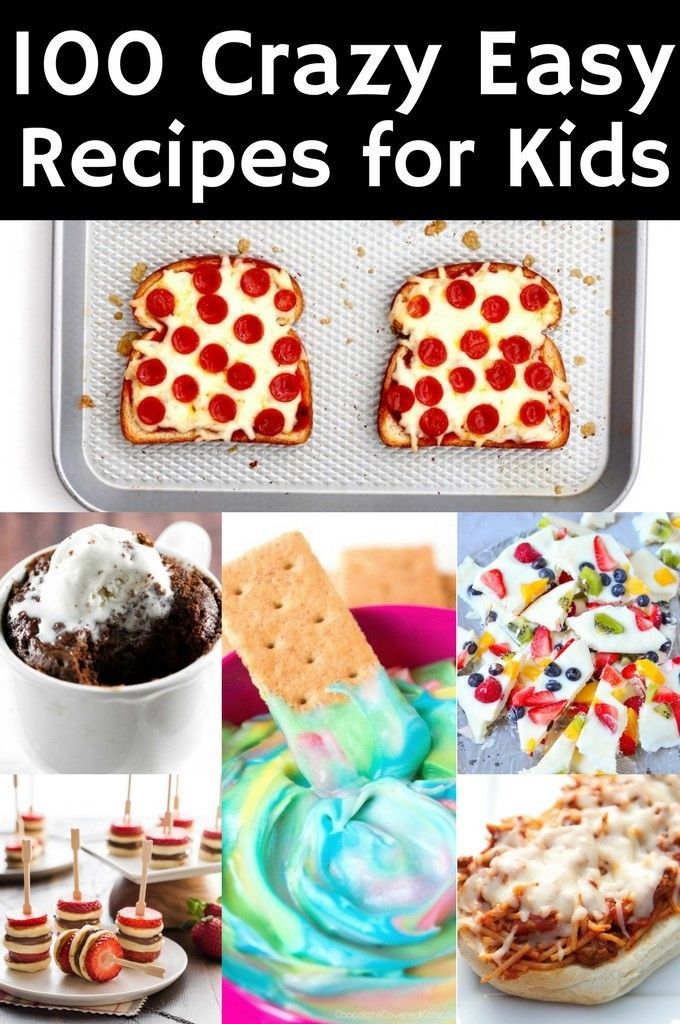
Exciting and Secure Methods to Prepare Meals with Your Children: A Guide to Enjoyable Cooking Activities for Families
Looking for a safe and creative way to spend quality time with your family? Why not get your kids involved in the kitchen? Cooking with kids can be a fun and educational experience for both children and parents. Not only does it teach them valuable life skills, but it also allows them to express their creativity through experimenting with different recipes and flavors.
When it comes to cooking with kids, safety is always a top priority. Make sure to establish some ground rules before you begin. Teach your kids about the importance of washing their hands, using oven mitts, and being cautious around sharp objects. By instilling these safety habits early on, you can ensure a worry-free and enjoyable cooking experience for everyone involved.
One of the best things about cooking with kids is the opportunity to try out new and exciting recipes. From baking cookies to making homemade pizzas, the possibilities are endless. Encourage your kids to come up with their own recipe ideas and let their imaginations run wild. Who knows, they might just come up with the next family favorite!
So, next time you’re looking for a fun and engaging activity to do with your kids, head to the kitchen. Cooking together not only strengthens the bond between parents and children but also provides a valuable learning experience. Get ready to create delicious dishes and lasting memories with your little chefs!
Easy and Delicious Recipes
When it comes to cooking with kids, it’s important to find recipes that are both easy and delicious. These recipes not only allow kids to get involved in the cooking process, but they also provide an opportunity for the whole family to bond and have fun together in the kitchen.
One creative and fun recipe that kids can help cook is homemade pizza. Start by making the dough from scratch, which involves mixing flour, yeast, water, and a pinch of salt. Kids can help knead the dough and roll it out into individual pizza crusts. Then comes the fun part – adding the toppings! Let each family member choose their favorite toppings, such as cheese, tomato sauce, vegetables, and meats. Bake the pizzas in the oven until the crust is golden and the cheese is melted. This recipe allows kids to be creative with their toppings and ensures a delicious and personalized pizza for everyone.
Another easy and delicious recipe to cook with kids is homemade pancakes. Start by combining flour, sugar, baking powder, and a pinch of salt in a bowl. In a separate bowl, mix together milk, eggs, and melted butter. Gradually add the wet ingredients to the dry ingredients, stirring until just combined. Kids can help pour the batter onto a hot griddle or frying pan and watch as the pancakes cook and bubble. Serve the pancakes with syrup, fresh fruit, or whipped cream for a tasty and satisfying breakfast or brunch.
If you’re looking for a sweet treat to make with your kids, try baking chocolate chip cookies. This classic recipe involves mixing together butter, sugar, eggs, vanilla extract, flour, baking soda, and of course, chocolate chips. Kids can help measure and mix the ingredients, and then drop spoonfuls of dough onto a baking sheet. As the cookies bake in the oven, the delicious aroma will fill the kitchen, creating a warm and inviting atmosphere. Once the cookies are golden brown and slightly crispy around the edges, take them out of the oven and let them cool before enjoying the sweet and chocolaty goodness.
Cooking with kids is not only a great way to teach them valuable kitchen skills, but it’s also a fun and bonding activity for the whole family. By trying out these easy and delicious recipes together, you can create lasting memories and enjoy the fruits of your labor.
Kitchen Safety Tips
When cooking with your kids, it’s important to prioritize safety in the kitchen. Here are some kitchen safety tips to ensure a fun and safe cooking experience for the whole family:
- Supervise at all times: Always supervise your kids while they are in the kitchen. This will help prevent accidents and ensure that they are following the correct procedures.
- Teach knife safety: Teach your kids how to safely handle and use knives. Show them how to hold the knife properly and always cut away from their fingers.
- Use age-appropriate tasks: Assign age-appropriate tasks to your kids. Younger children can help with mixing ingredients or setting the table, while older kids can handle more complex tasks like chopping vegetables.
- Keep the kitchen clean: Encourage your kids to clean up spills immediately to prevent slips and falls. Make sure all appliances and utensils are properly stored after use to avoid accidents.
- Be mindful of hot surfaces: Teach your kids to be cautious around hot surfaces like stovetops and ovens. Use oven mitts or pot holders when handling hot dishes or pans.
- Practice good hygiene: Teach your kids to wash their hands before and after handling food. This helps prevent the spread of bacteria and keeps the kitchen clean.
- Read and follow recipes: Teach your kids the importance of reading and following recipes. This will help them understand the steps involved and ensure that they are using the correct ingredients and measurements.
By following these kitchen safety tips, you can create a fun and bonding experience for your family while ensuring that everyone stays safe and enjoys the creative process of cooking together.
Benefits of Cooking with Kids
Cooking with kids is a wonderful way to spend time together in the kitchen, creating delicious meals and fostering creativity. It is not only a fun and safe activity, but it also has numerous benefits for the whole family.
1. Learning opportunity: Cooking provides a hands-on learning experience for kids, where they can learn about different ingredients, measurements, and cooking techniques. It helps them develop important skills such as reading, following instructions, and problem-solving.
2. Healthy eating habits: By involving kids in the cooking process, they become more interested in trying new foods and making healthier choices. They are more likely to eat fruits, vegetables, and whole grains when they have a hand in preparing them.
3. Family bonding: Cooking together creates a sense of togetherness and strengthens family bonds. It provides an opportunity for parents and kids to work together as a team, communicate, and share quality time. It also encourages open conversations and builds trust.
4. Confidence boost: When kids are involved in cooking, they gain a sense of accomplishment and pride. They feel valued and capable of contributing to the family. This boost in self-esteem can have a positive impact on their overall development.
5. Creativity and experimentation: Cooking allows kids to unleash their creativity and experiment with different flavors and ingredients. They can come up with their own recipes or put their own twist on existing ones. This fosters their imagination and helps them think outside the box.
6. Life skills: Cooking is a life skill that everyone should learn. By starting early, kids can develop essential cooking skills that will benefit them throughout their lives. They will become more self-sufficient and capable of preparing their own meals when they grow up.
In conclusion, cooking with kids is not just about preparing meals. It is a fun and engaging activity that provides numerous benefits, including learning opportunities, healthy eating habits, family bonding, confidence building, creativity, and the development of essential life skills.
Learning Opportunities in the Kitchen
Involving your family in the kitchen can create a strong bond and provide valuable learning opportunities for kids. The kitchen is not only a place to cook and eat, but also a place to learn and have fun together. By cooking with your kids, you can teach them important life skills, encourage creativity, and foster a love for healthy food.
One of the main learning opportunities in the kitchen is teaching kids how to follow recipes. By following step-by-step instructions, kids learn about sequencing, measuring ingredients, and understanding cooking terms. This helps improve their reading and comprehension skills, as well as their math skills as they measure and count ingredients.
Cooking with kids also provides an opportunity to introduce them to new foods and flavors. By involving them in the cooking process, they become more open to trying new things and expanding their palate. This can help develop a lifelong love for healthy eating and encourage them to make nutritious food choices.
The kitchen is also a great place to teach kids about kitchen safety. By explaining and demonstrating proper handling of sharp knives, hot surfaces, and electrical appliances, you can instill good safety habits in your kids. This helps them become more aware of potential dangers in the kitchen and learn how to handle them responsibly.
Furthermore, cooking with kids can spark their creativity. Encouraging them to come up with their own recipes or experiment with different ingredients helps develop their problem-solving skills and fosters their imagination. It’s a great way to let their creativity shine and have fun in the process.
In conclusion, the kitchen offers numerous learning opportunities for kids. From following recipes to learning about new foods, kitchen safety, and nurturing creativity, cooking with your kids can be a fun and educational experience for the whole family.
Healthy Snack Ideas
When it comes to cooking with your kids, it’s important to make it fun and family-oriented. One great way to do this is by preparing healthy snacks together in the kitchen. Not only will it be a creative and bonding experience, but it will also teach your kids about the importance of making nutritious food choices.
Here are a few fun and healthy snack ideas that you and your kids can cook together:
- Fruit Kabobs: Get creative by cutting up a variety of fruits and threading them onto skewers. You can use strawberries, pineapple, grapes, and melon. Encourage your kids to make their own combinations and patterns.
- Veggie Wraps: Take a large lettuce leaf and fill it with sliced veggies like cucumbers, carrots, and bell peppers. Roll it up and secure it with a toothpick. This is a great way to get your kids to eat more vegetables.
- Yogurt Parfait: Layer Greek yogurt, fresh berries, and granola in a glass or bowl. Your kids can have fun creating different combinations and experimenting with flavors.
- Ants on a Log: Cut celery sticks into small pieces and fill the groove with peanut butter or cream cheese. Top it off with raisins or dried cranberries to resemble ants. This snack is not only fun to make, but it’s also a great source of protein and fiber.
- Homemade Trail Mix: Create your own trail mix by combining nuts, dried fruit, and whole grain cereal. Let your kids choose their favorite ingredients and mix it all together. This snack is perfect for on-the-go or as an after-school treat.
These are just a few examples of the many healthy snack recipes you can try with your kids. Remember to make it a fun and interactive experience by letting them take the lead and get creative in the kitchen. Cooking together not only helps develop their culinary skills but also creates lasting memories and strengthens family bonds.
Cooking with Seasonal Ingredients
Cooking with seasonal ingredients is a safe and enjoyable way for families to get creative in the kitchen. By using ingredients that are in season, you can ensure that your meals are fresh, flavorful, and nutritious.
One of the benefits of cooking with seasonal ingredients is that it allows kids to learn about different fruits and vegetables and how they grow. This can be a fun and educational experience, as kids can see firsthand how their food is produced.
Not only does cooking with seasonal ingredients provide a great opportunity for bonding with your kids, but it also encourages them to try new foods. When kids are involved in the cooking process, they are more likely to be adventurous and willing to taste new flavors.
To make cooking with seasonal ingredients even more fun, you can involve your kids in the planning process. Sit down together and look up what fruits and vegetables are in season during that time of year. Create a menu together and let your kids choose what dishes they would like to cook.
Another way to make cooking with seasonal ingredients enjoyable is to turn it into a game. Challenge your kids to create a dish using only ingredients that are in season. This will not only encourage their creativity but also teach them about the importance of using fresh, local produce.
In conclusion, cooking with seasonal ingredients is a safe and family-friendly activity that can be both fun and educational. It allows kids to learn about different fruits and vegetables, try new foods, and get creative in the kitchen. So next time you’re looking for a fun bonding activity with your kids, consider cooking with seasonal ingredients.
International Cuisine Exploration
Exploring international cuisine in the kitchen with your kids is a fun and safe way to introduce them to new flavors and cultures. Cooking together allows you to bond as a family while creating delicious meals from around the world.
There are endless possibilities when it comes to international recipes that you can cook with your kids. From Italian pasta dishes to Mexican tacos, each cuisine offers its own unique flavors and cooking techniques. You can start by researching different recipes online or in cookbooks, and then choose a few that you think your kids will enjoy.
Once you have chosen your recipes, gather all the necessary ingredients and equipment. Make sure to involve your kids in the preparation process, whether it’s measuring ingredients, chopping vegetables, or mixing the batter. This will not only teach them important cooking skills, but also make them feel like active participants in the cooking process.
As you cook together, encourage your kids to ask questions about the ingredients and techniques used in the recipe. This will not only help them learn about different cultures, but also develop their curiosity and love for cooking. You can also take this opportunity to teach them about the importance of food safety and hygiene in the kitchen.
Once your international dish is ready, sit down as a family and enjoy the fruits of your labor. Use this time to discuss the flavors and textures of the food, and talk about the culture it comes from. This will not only expand your kids’ culinary horizons, but also create lasting memories of cooking and bonding as a family.
Baking and Decorating Cakes

Baking and decorating cakes with your kids is a great way to bond and spend quality time together in the kitchen. It is a creative and fun activity that allows children to express their imagination and artistic skills while learning valuable cooking techniques.
When it comes to baking cakes, there are plenty of safe and easy recipes that you can try with your kids. From classic chocolate cakes to fruity and colorful ones, the options are endless. You can involve your children in every step of the process, from measuring and mixing the ingredients to greasing the cake pans and decorating the finished product.
One of the best parts of baking and decorating cakes with kids is the opportunity to let their creativity shine. Encourage them to choose their favorite flavors and colors for the cake batter and frosting. You can also provide them with various decorating tools, such as piping bags, sprinkles, and edible decorations, to let them create their own unique designs.
It’s important to ensure that the baking and decorating process is safe for your kids. Make sure to supervise them closely, especially when using the oven or handling hot pans. Teach them the importance of proper handwashing and hygiene in the kitchen. You can also provide them with kid-friendly kitchen utensils and tools to make the process easier and safer for them.
Baking and decorating cakes with your kids is not only a fun and creative activity, but it also helps them develop important life skills. They learn how to follow recipes, measure ingredients, and work as a team. They also gain confidence in the kitchen and a sense of accomplishment when they see the final result of their hard work. So, grab your aprons, gather your ingredients, and get ready for a fun-filled and delicious baking adventure with your kids!
Making Homemade Pizza
One of the most fun and creative ways to cook with your kids is making homemade pizza. It’s a great activity to do together as a family, and it allows everyone to get involved in the kitchen. Making pizza from scratch not only teaches kids about cooking and following recipes, but it also creates a bonding experience as you work together to create a delicious meal.
To start, gather all the necessary ingredients for the pizza dough and toppings. You can find various pizza dough recipes online or use a store-bought one if you prefer. Encourage your kids to measure and mix the ingredients, teaching them about the importance of precise measurements in cooking.
Next, let your kids get creative with the toppings. Set up a variety of options such as different cheeses, vegetables, meats, and herbs. Allow them to choose their favorite combinations and arrange them on the pizza dough. This is a great opportunity for kids to express their individuality and experiment with flavors.
Once the pizza is assembled, preheat the oven to the recommended temperature and bake the pizza according to the recipe instructions. While waiting for the pizza to cook, engage your kids in a conversation about their favorite pizza memories or discuss different types of pizza from around the world. This will not only keep them entertained but also teach them about the cultural aspects of food.
Finally, when the pizza is ready, gather around the table as a family and enjoy your homemade creation. Encourage your kids to share their thoughts on the taste and texture of the pizza. This will not only make them feel proud of their cooking skills but also foster a love for food and the joy of sharing a meal together.
Making homemade pizza with your kids is not only a fun and creative way to cook, but it also creates lasting memories and strengthens the bond within your family. So, put on your aprons, roll up your sleeves, and get ready to embark on a delicious pizza-making adventure!
Outdoor Cooking Adventures
Outdoor cooking adventures are a great way to bond with your kids while having fun and creating delicious meals together. Cooking outdoors allows kids to explore their creativity and learn about different recipes in a safe and enjoyable environment.
One of the best things about outdoor cooking is that it provides a change of scenery from the usual kitchen setting. Kids can experience the thrill of cooking in nature, surrounded by fresh air and beautiful surroundings. This can make the cooking process even more exciting and enjoyable for them.
When cooking outdoors with your kids, it’s important to prioritize safety. Make sure to choose an appropriate cooking area that is away from any hazards and provide clear instructions on how to handle cooking equipment and utensils. Always supervise your kids and teach them about fire safety and proper food handling techniques.
Outdoor cooking adventures can be a great opportunity for kids to learn about different types of cuisine and try out new recipes. Encourage them to get creative and come up with their own unique dishes. You can even organize a mini cooking competition where each child can present their creation and explain the ingredients and cooking process.
Cooking outdoors with your kids not only provides a fun and educational experience, but it also allows for quality bonding time. Use this opportunity to have meaningful conversations and strengthen your relationship with your children. Enjoy the process of cooking together and savor the delicious meals you create as a family.
Creative Food Presentation
When it comes to cooking with kids, one way to make it even more fun is by getting creative with food presentation. Not only does it make the food look more appealing, but it also allows kids to use their imagination and creativity in the kitchen.
One idea is to create themed meals or snacks. For example, you can make a “rainbow salad” by using a variety of colorful fruits and vegetables like cherry tomatoes, bell peppers, carrots, blueberries, and strawberries. Arrange them in a rainbow pattern on a plate and watch as your kids marvel at the beautiful colors.
Another creative presentation idea is to make food look like animals or objects. For example, you can use a cookie cutter to shape sandwiches into fun shapes like hearts, stars, or animals. You can also use fruit and vegetables to create edible art. Slice a banana into rounds and use them as eyes, and use berries or other small fruits to create a smiley face on a pancake.
Creating a “build-your-own” meal can also be a fun and creative way to present food. For example, you can set up a taco bar with different toppings like shredded cheese, diced tomatoes, guacamole, and sour cream. Let your kids assemble their own tacos and watch as they get excited about customizing their meal.
Not only does creative food presentation make mealtime more fun, but it also provides an opportunity for bonding with your kids in the kitchen. Working together to create a visually appealing dish allows for collaboration and teamwork. Plus, it encourages kids to try new foods and flavors.
In conclusion, incorporating creative food presentation into your cooking activities with kids is a great way to make mealtime more enjoyable and engaging. Whether it’s arranging food in a fun pattern, shaping it into fun shapes, or allowing kids to customize their own meals, the possibilities are endless. So, get creative, have fun, and enjoy the delicious recipes you create together!
Cooking with Fresh Herbs
When it comes to cooking in the kitchen with kids, using fresh herbs can be a fun and creative way to introduce them to new flavors and enhance their cooking skills. Fresh herbs not only add a burst of flavor to dishes, but they also provide numerous health benefits.
One way to get your kids involved in cooking with fresh herbs is to let them help you pick and wash the herbs from your garden. This can be a great opportunity for them to learn about different types of herbs and how they can be used in various dishes. Encourage them to use their senses to smell and touch the herbs, helping them to develop a deeper appreciation for the ingredients they are working with.
Once the herbs are washed and ready to use, you can involve your kids in the cooking process by having them help chop or tear the herbs. This can be a safe and age-appropriate task for them, as long as they are supervised and using child-friendly knives or kitchen scissors. Not only will this help improve their fine motor skills, but it will also give them a sense of accomplishment as they contribute to the family meal.
In addition to chopping or tearing herbs, kids can also help measure out the correct amounts needed for the recipe. This can be a great way to practice math skills, as they learn about fractions and measurements. Encourage them to be precise and pay attention to detail, as this will help them develop their cooking skills and ensure the dish turns out deliciously.
Lastly, cooking with fresh herbs can be a bonding experience for the whole family. As you work together in the kitchen, you can share stories, laugh, and create memories. This not only makes cooking more enjoyable, but it also strengthens the family bond. So, gather your kids, grab some fresh herbs, and get ready to have a fun and flavorful cooking adventure!
Vegetarian and Vegan Cooking
Vegetarian and vegan cooking can be a fun and safe way for kids to bond with their family in the kitchen. Cooking together not only allows kids to learn new skills, but it also encourages them to be more creative with their food choices. By exploring vegetarian and vegan recipes, kids can discover a whole new world of delicious and nutritious meals.
One of the benefits of vegetarian and vegan cooking is that it is often safer for kids to handle ingredients. There is no need to worry about cross-contamination with raw meat, and the risk of foodborne illnesses is significantly reduced. This makes vegetarian and vegan cooking a great option for families who want to ensure the safety of their kids in the kitchen.
Cooking vegetarian and vegan meals with kids can also be a great way to introduce them to new flavors and ingredients. They can learn about different types of fruits, vegetables, grains, and legumes, and how to incorporate them into tasty dishes. This not only expands their palate but also helps them develop a love for healthy and diverse food options.
Additionally, cooking vegetarian and vegan meals as a family can promote a sense of teamwork and cooperation. Kids can take on different roles in the kitchen, such as chopping vegetables, measuring ingredients, or stirring the pot. This collaborative effort fosters a sense of responsibility and teaches kids the importance of working together towards a common goal.
Overall, vegetarian and vegan cooking offers a fun and safe way for kids to bond with their family in the kitchen. It allows them to explore their creativity, try new flavors, and develop important life skills. So why not grab your aprons and get cooking with your kids today?
Cooking as a Family Bonding Activity
Cooking together as a family can be a great bonding experience. It provides an opportunity for parents and children to spend quality time together in the kitchen, working towards a common goal. When families cook together, they create memories and strengthen their relationships.
Cooking with your kids can also be a safe activity. By involving them in the kitchen, you can teach them important skills such as measuring ingredients, following recipes, and using kitchen tools safely. It is important to establish rules and guidelines to ensure everyone’s safety, such as using oven mitts when handling hot items and keeping sharp knives out of reach.
There are plenty of fun and kid-friendly recipes that you can try as a family. From baking cookies to making homemade pizza, there are endless possibilities for delicious and enjoyable meals. Involving kids in meal planning can also be a great way to teach them about nutrition and healthy eating habits.
Cooking together as a family not only provides an opportunity for fun and learning, but it also encourages teamwork and cooperation. Each family member can have their own role in the kitchen, whether it’s measuring ingredients, stirring the batter, or decorating the final product. This allows everyone to contribute and feel a sense of accomplishment.
So next time you’re looking for a fun and engaging activity to do with your kids, consider cooking together. It’s a great way to bond as a family, teach important skills, and create lasting memories in the kitchen.
Food Safety Practices
When cooking with your kids, it’s important to prioritize safe food handling practices to ensure the health and well-being of your family. By following these food safety guidelines, you can create a safe and enjoyable cooking experience for everyone involved.
1. Wash Hands: Before starting any cooking activity, make sure that both you and your kids wash your hands thoroughly with warm water and soap. This simple step helps to eliminate any bacteria or germs that may be present on your hands.
2. Clean Surfaces: Ensure that your cooking surfaces, utensils, and equipment are clean and sanitized before you begin. This reduces the risk of cross-contamination and helps to maintain a safe cooking environment.
3. Use Fresh Ingredients: When selecting ingredients for your recipes, always check the expiration dates and choose fresh, high-quality products. This not only enhances the flavor of your dishes but also minimizes the risk of foodborne illnesses.
4. Separate Raw and Cooked Foods: It’s crucial to keep raw meats, poultry, and seafood separate from cooked foods to prevent cross-contamination. Use different cutting boards and utensils for raw and cooked ingredients to avoid the spread of harmful bacteria.
5. Cook Thoroughly: Ensure that all food is cooked to the appropriate internal temperature to kill any bacteria that may be present. Use a food thermometer to check the doneness of meat, poultry, and fish, and follow recommended cooking times for other ingredients.
6. Store Properly: After cooking, store leftovers in airtight containers and refrigerate them promptly to prevent the growth of bacteria. Teach your kids the importance of proper food storage to avoid food poisoning.
7. Communicate and Educate: Use cooking as an opportunity to educate your kids about food safety practices. Explain the reasons behind each step and involve them in the decision-making process. This not only enhances their understanding but also strengthens the bonding experience.
8. Have Fun and Be Creative: While following food safety practices is essential, don’t forget to have fun and be creative in the kitchen! Encourage your kids to explore new recipes and flavors, fostering their love for cooking and creating lasting family memories.
By incorporating these food safety practices into your cooking sessions with your kids, you can ensure a safe and enjoyable experience that promotes bonding, creativity, and the development of important life skills.
Encouraging Picky Eaters to Try New Foods
When it comes to mealtimes, picky eaters can be a challenge for parents. However, there are fun and creative ways to encourage kids to try new foods and expand their culinary horizons. One effective strategy is to involve them in the cooking process in the kitchen.
By allowing picky eaters to participate in meal preparation, they can develop a sense of ownership and curiosity about the food they are helping to cook. This can make the experience more enjoyable and less intimidating for them, as they become more familiar with different ingredients and flavors.
A safe and bonding environment in the kitchen is crucial when trying to encourage picky eaters to try new foods. Parents should establish clear rules and guidelines to ensure that everyone is safe while cooking. This can include using child-friendly utensils and equipment, teaching proper handwashing techniques, and supervising closely to prevent accidents.
Another effective way to encourage picky eaters is to make the cooking process fun and interactive. Parents can incorporate games, challenges, or rewards to make the experience more eng





